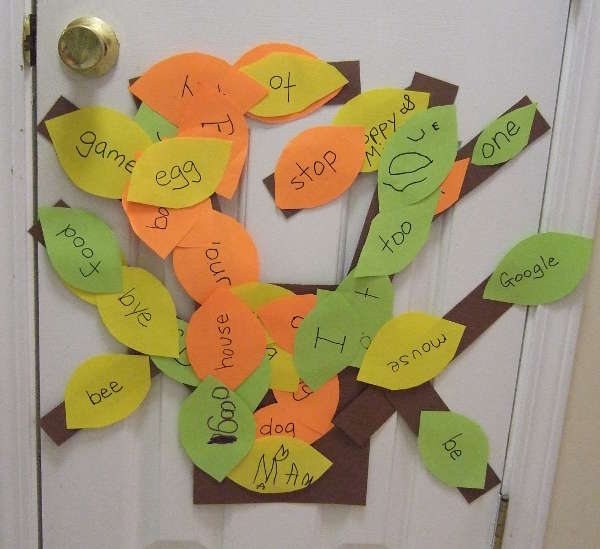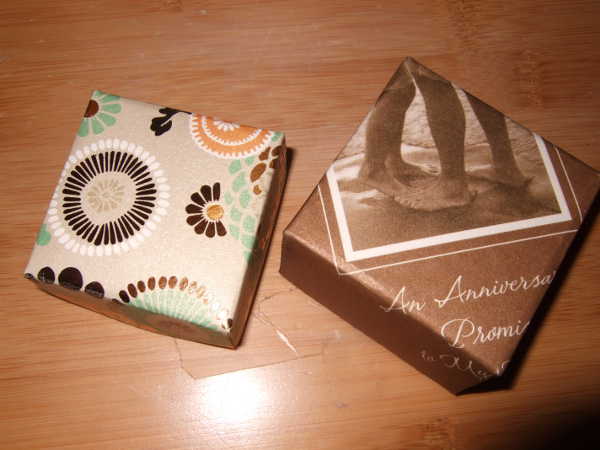
My Aunt Gladys diligently made these little boxes from all the greeting cards she received. I was so honored that she showed me step by step how to make them so that now I have made many of my own. I now have had the honor of showing this technique to my son.
Use these little boxes to store items, give small gifts or as decorations.
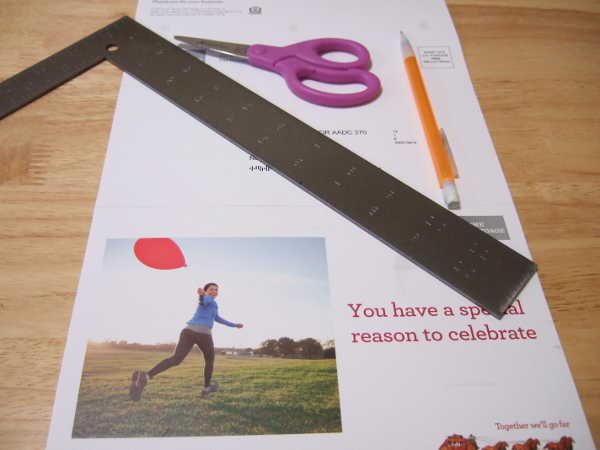
Materials:
Greeting card or light card stock mailer/ad
Ruler or L-square or T-Square
Pencil
Scissors
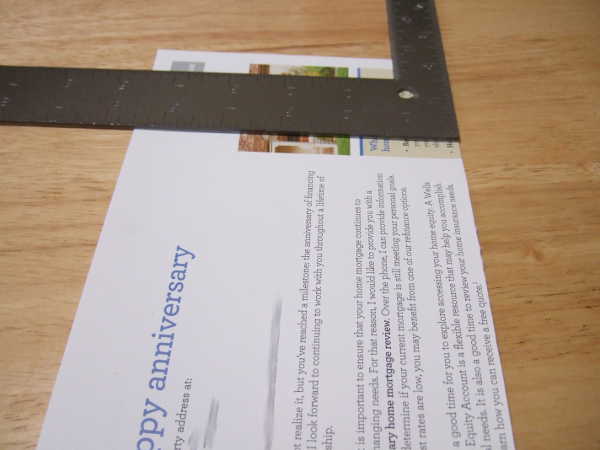
If using a greeting card, us the front of the card for the top of the box and the back of the card for the bottom of the box. If using a mailer, you can save half for the bottom of the box or use another mailer for the bottom.

Measure the material for the top the shortest direction. Measure and mark a line to cut to make a square. If you are using a ruler, you will need to make two marks at either side at the correct measurement and then draw a straight line. If you are using an L- or T-ruler, you can mark the measurement once and draw the line square from the long edge.
Make a note of this measurement because you will want to make the square for the bottom of the box 3/8 or 1/2 smaller on the sides than this square. Use 3/8 for lighter stock and 1/2 for heavier.
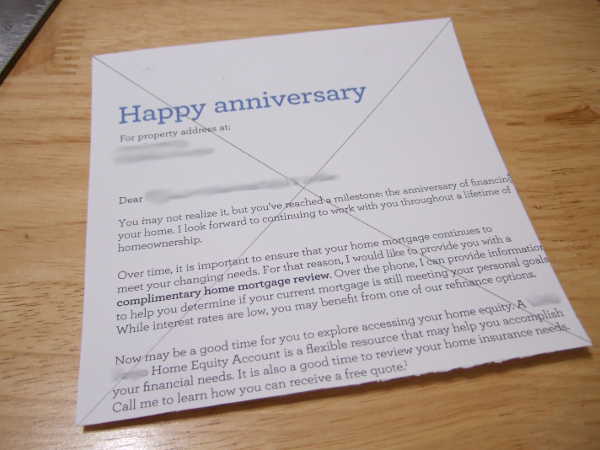
Cut along that line to get your square. On the back side of the paper from what you want to show on your box, draw lines between opposite corners. The crossing point is the center of your square.

Fold one of the corners so that the point of the corner is right at the crossing point of the lines. Crease the fold well with something hard such as the back of a spoon.

Fold again so that the fold just touches the center line. Crease the fold well. Unfold both folds. Turn the square a quarter turn and make both folds on the next corner. Repeat for the other two corners, always unfolding first before moving to the next.

Now your folds should form a grid. The square in the center of the folds with the pencil X in the center will be the top of the box.

Now you need to make four cuts. With one corner facing you, cut along the two creases that are from the corners of the box top to the edge nearest you. Cut just to the corner but careful not to cut further. Try to cut straight and right on the crease. Turn the square to the opposite corner and repeat.

Now you are ready to fold your box. Fold the two uncut corners to the middle, then fold again just so that the fold forms a right angle to the top. Fold in the two “flaps” on both sides.

Now fold up the two cut sides at the crease that forms the edge of the top. Then fold it over the two flaps to secure them. All four corners should meet at the center of the inside of the box. If the card stock is heavy, the corners may hold secure on their own, but you can add a small piece of tape where the four corners meet to secure.
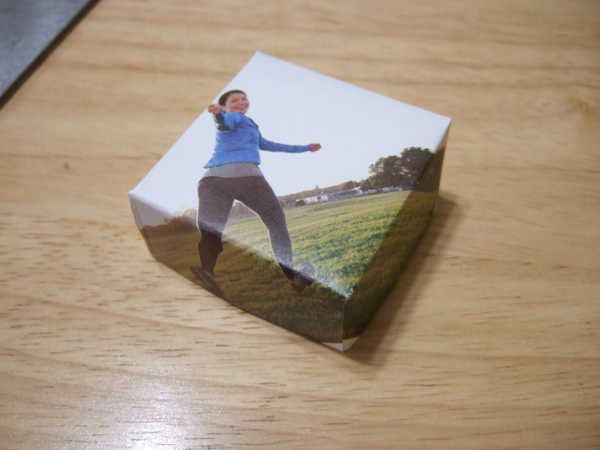
Repeat these steps to form the bottom of the box, cutting the square 3/8″ to 1/2″ smaller than the top.













